How Our Sugaring Season Began!
The beginning of the year is always exciting here on the homestead as we get ready to tap Walnut trees as soon as the weather is ideal. Tapping Walnuts for sap is always fun and exciting but also, a very time consuming task.
When to start Tapping Walnut Trees
The first week of January I dug all my tapping supplies out of storage to get everything clean and ready. While we were getting everything ready I would keep a close eye on the forecast. It did not take long to see that the temperatures for the next few weeks were perfect to cause sap flow, so I went ahead and tapped a few trees as “test” trees.
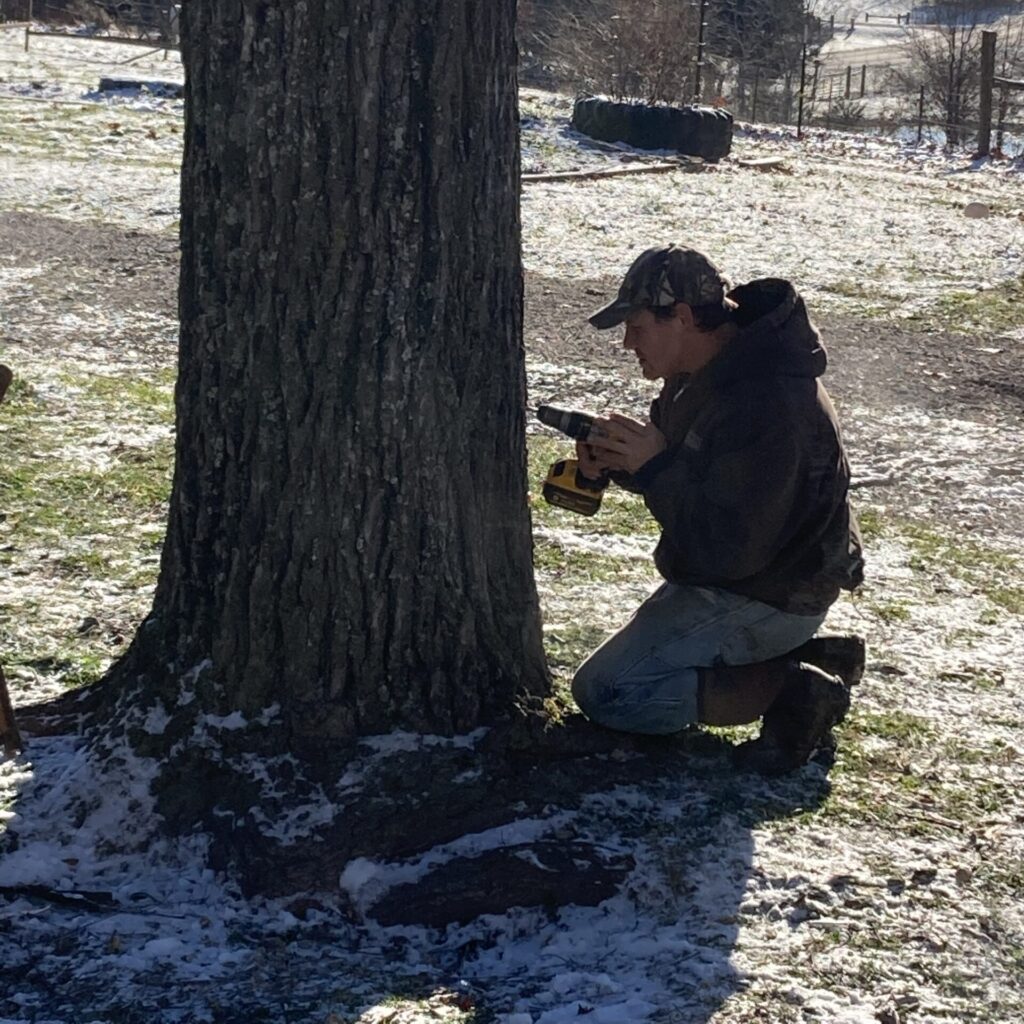
Knowing exactly when to start tapping walnut trees in south Missouri is tricky. For sap to start flowing in walnut trees the temperature at night needs to drop below freezing but rise to between 40 to 60 degrees during the day. In fact, after a real cold night, sap will really flow well when the temperature hits 45 to 50 degree during the day. Generally, this process begins in January and last through February for about 4 to 6 weeks.
Anyway, the ideal temperature for tapping trees was in the forecast for us, so taking advice from an experienced friend, I tapped some of my best producing trees and monitored their sap flow. The idea is that once the sap starts flowing well in the “test” trees, you know it is time to tap the rest of the trees.
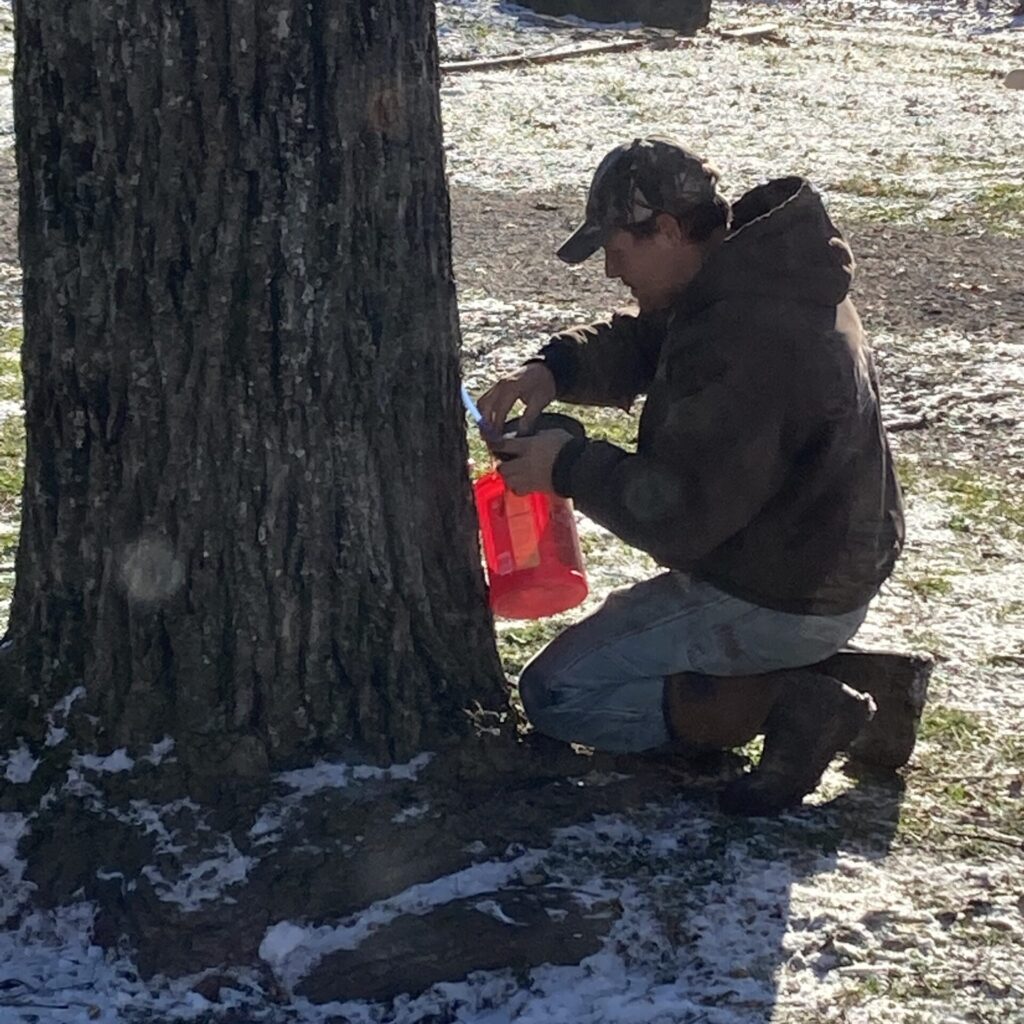
Within a few days of tapping the first trees, I started to get some reasonable flow. At that point, we set all the taps out. We had already decided to tap 2x as many trees as last year but I still ran out of spiles before I ran out of trees! So, I immediately ordered 50 more spiles off Amazon that afternoon when I got back to the house. However, we were soon in for a real surprise.
An Unexpected Surplus of Sap
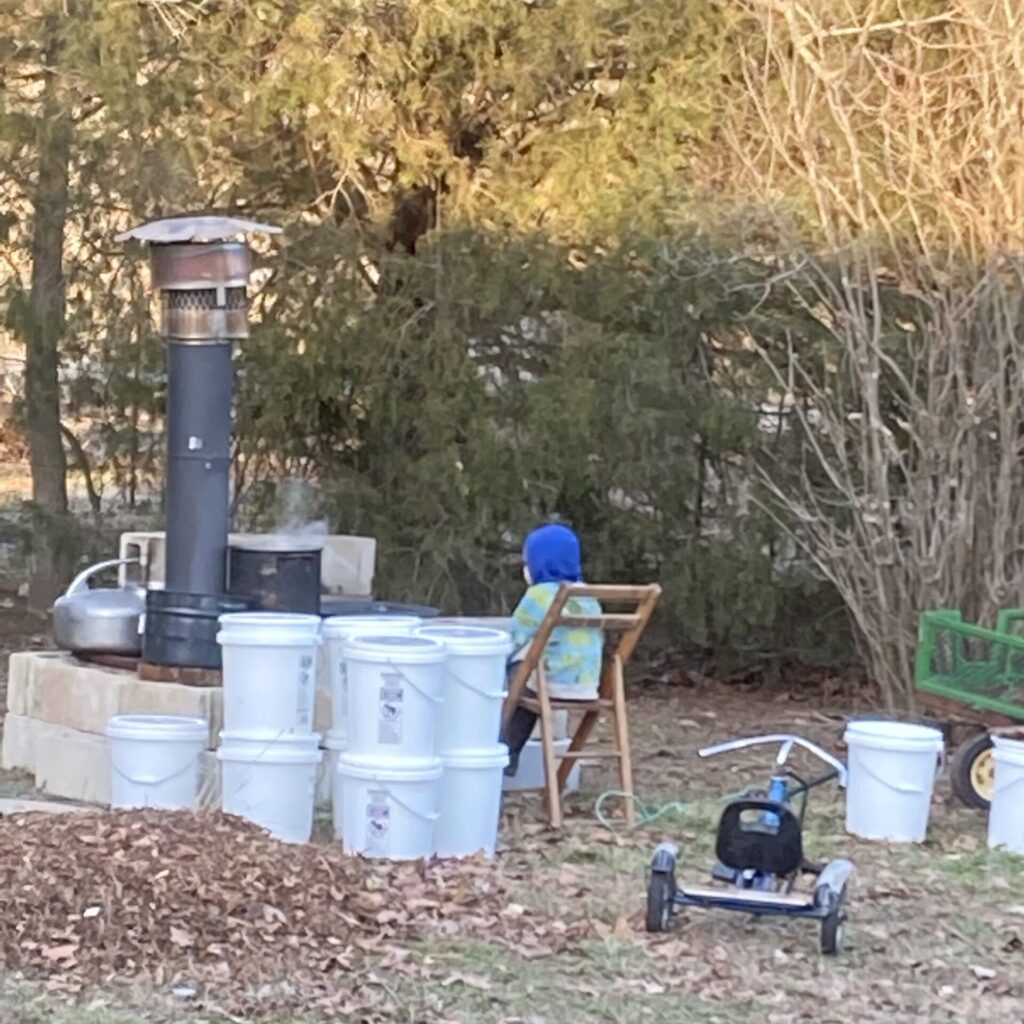
It was the second week of January, the middle of winter, when I ran out of spiles for tapping the trees. That evening I collected a meager amount of sap. I was not expecting much since I had just put most of them in the trees a few hours earlier. We went to bed that evening not expecting anything out of the ordinary, maybe 15 to 20 gallons of sap by the end of the next day. So, based on that estimate we figured we could wait several days to boil the sap down to syrup especially since I bought several new pails to increase our storage. Since there was no rush to boil sap, I made plans to take care of some off-the-farm welding jobs I have been needing to get done. We just had no high expectations of any major sap flow just yet.
However, in the morning when I went to check the taps, I will just say, it immediately changed my plans for the rest of the week. Nearly all the buckets collecting the sap were overflowing or close. I had never expected that! That morning I collected 40 gallons and in the evening another 25 gallons and the next morning another 30 gallons. We had just bought a bunch of new pails to store sap in, but suddenly everything was full and we still had sap to bring in! But with this amount of sap in twenty-four hours we had a real issue. We immediately ran out of storage containers with nowhere to put the sap that was continuing to come in twice a day!
Desperate Times call for Desperate Measures
With this dilemma our plans quickly changed and we went into action. We began boiling the sap right away rather than wait. We were desperate to make room for the incoming sap which was coming in so fast that we were afraid that we would not be able to boil it off fast enough. It really left us no choice but to keep the wood evaporator going continuously through the night. That first big run of sap took us a continuous 48 hours to boil down. We were tired but it was worth it. We ended up with some delicious syrup.
Improving the Sap Evaporating Process
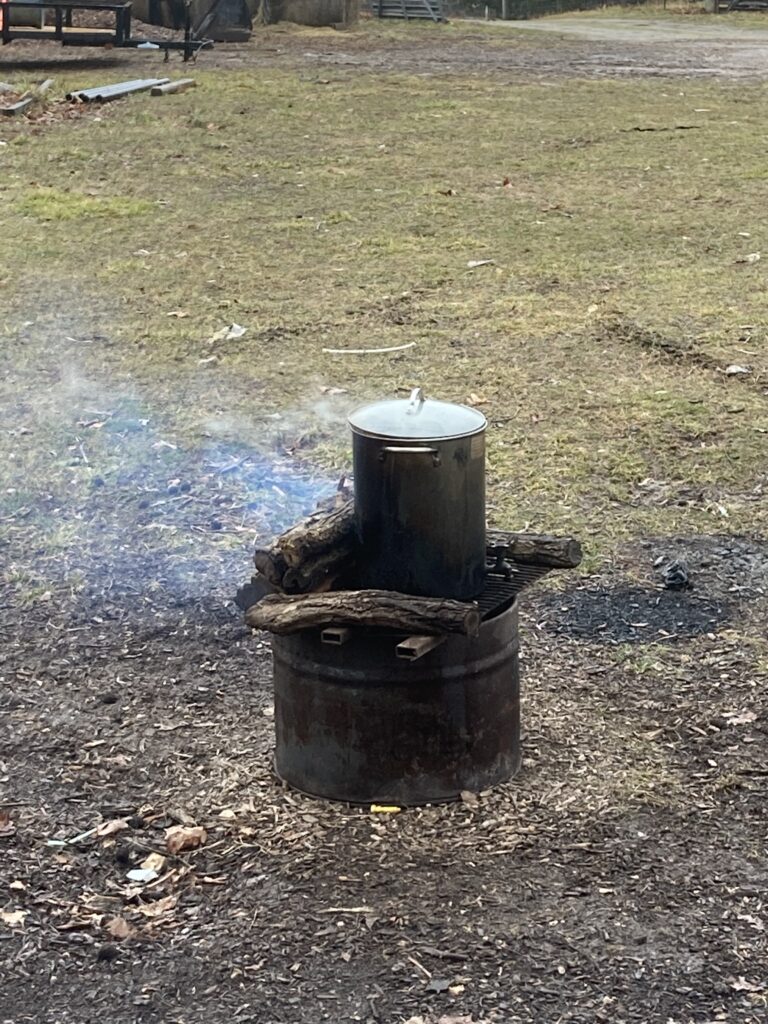
Now, let me explain what we use to boil our sap and how it has evolved. Last year we simply boiled about 20 to 25 gallons every several days in an eight gallon pot over the firepit and on the stove in the house. It worked alright but we did not have near as much sap as we were planning to have this year. Last year, over the course of two months we made about 3 gallons of syrup which is only about 120 to 150 gallons of sap. Though this is not much, it took quite awhile for an eight gallon pot to boil down that much sap. All in all, since we knew we were going to have more sap this year we knew we needed a better faster boiling process.
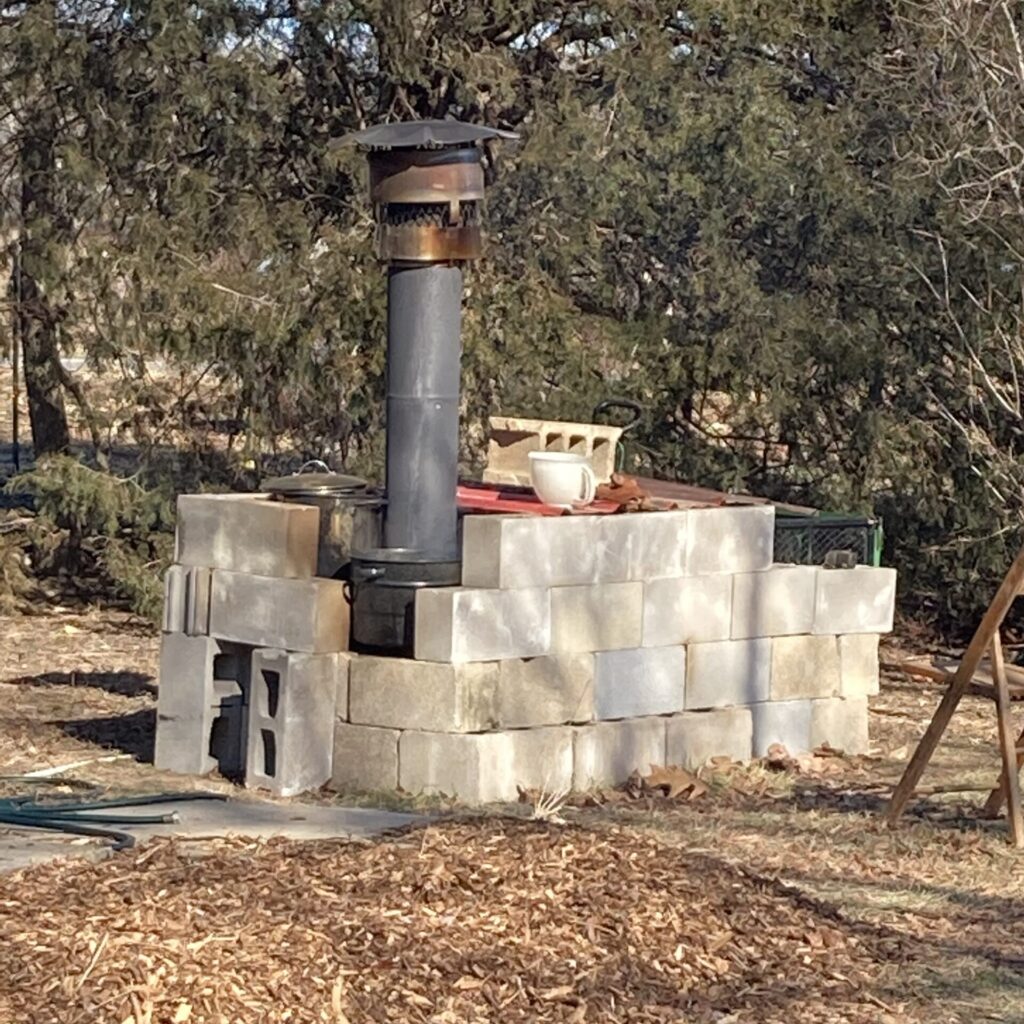
To accomplish this, I built this outdoor stove by repurposing some blocks and scrap metal I had. What I learned from last year was that sap will evaporate faster in a shallow pan that allows for more surface exposure of the boiling sap rather than a tall narrow pot that does not give the sap much exposed surface area. We also learned that we need more pans than one. It is not ideal to add cold sap to the one pot or pan because every time that happens the new cold sap stops or slows down the evaporation process until it gets back up to heat. Which, obviously, slows down the process.
Pre-Warming Sap Speeds Up the Process
With our outdoor stove we have three warming pots and three evaporator pans. How this works is that when the evaporator pans need filling we draw sap out of pan #5 pouring it into pan #6, then from pan #4 to pan #5 then from pot #3 to pan #4 and so on until we have room in pot #1 to pour more cold sap into to begin warming. This system works much better than the firepit. In fact, once everything is warmed up and going smoothly we boil off about 4 gallons per hour, provided we keep the fire going very hot.
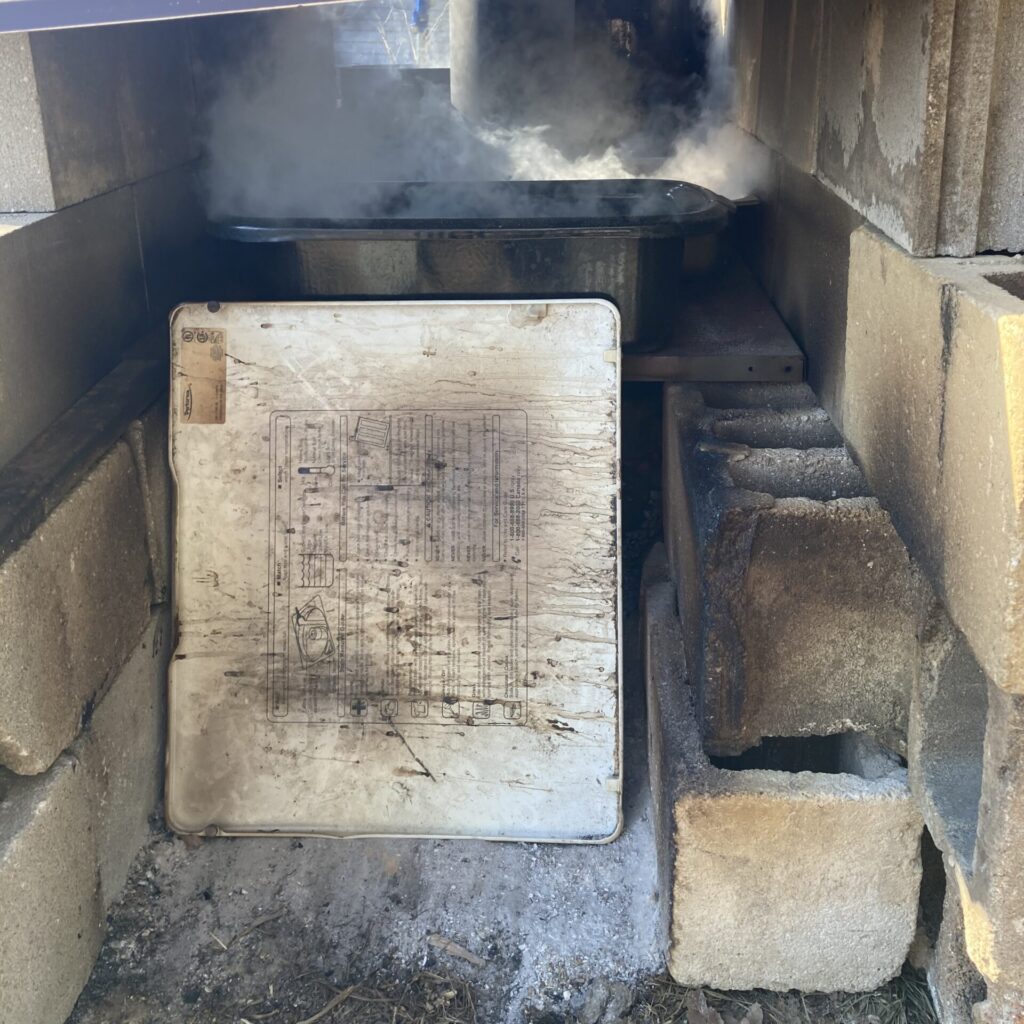
Always Seek to Improve the Process
Although we are loving our new set-up I already am making plans to improve the boiling process by next year. It still takes a lot of time and a lot of wood fuel to boil down the sap, so any way I can find to make it more efficient both in time and fuel will cut down on the cost to make the syrup. It really is no wonder walnut syrup is so expensive – but it is fun to do and so delicious when you finally have it. Though we were we tired it was exciting to experience the abundance our good God gives us in nature with this surprising amount of sap. This is only the beginning of the season, it will be exciting to see how the rest of the experience goes!
Yours truly until next time the Lord Willing,
Matt @ Vander Waal Homestead
If you would like to know more be sure to send me your questions in the comments and follow us on social media and on our website at vanderwaalhomestead.com so you won’t miss anything.
P.S. Be sure to be on the lookout, I hope to post more on the topic of making walnut syrup soon!!
